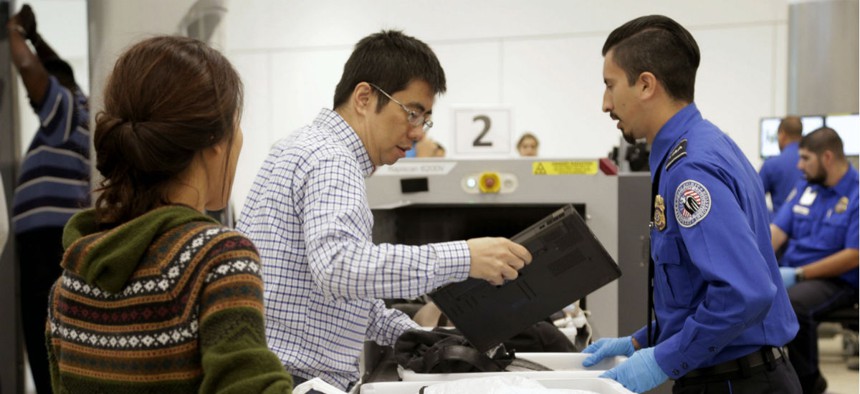TSA's Facial Recognition Pilot Program May Make Travel Worse for Ethnic Minorities
Program could make travel simpler for some, but more complicated for others.
You’d be hard pressed to find a traveler who would describe getting through security at Los Angeles International Airport as an orderly or peaceful experience. Even when the threat level is deemed moderate, long lines, stringent security, and barking security agents are more or less the norm.
But as of this week, the Transportation Security Administration is trying to streamline the experience, with an opt-in pilot program using biometric facial recognition technology, which is aimed at verifying and matching a passenger’s identity to their travel documents. It’s intended to automate the often repetitive and human error-prone process of verifying a passenger’s boarding pass and passport several times over before boarding. The pilot project is being run at the boarding gate—documents will also be manually checked during the test program to ensure no security lapses—in a partnership with British Airways, U.S. Customs and Border Protection, and LAX’s Tom Bradley International terminal.
According to industry intelligence agency CAPA Centre for Aviation, the plan is in keeping with President Donald Trump’s wider aims to tighten border security measures. Though the technology existed before he took office—similar programs have been tested or are in use in the United Kingdom, Canada, Australia, and at Washington Dulles airport in 2015 and New York’s JFK in 2016—Trump has expedited implementation, despite the technology’s so-called “teething problems.”
Whether you are a fan of Trump’s policies to tighten border security or not, there is certainly a case to be made that biometric boarding could eventually be a boon for all travelers who dislike what CAPA colorfully calls the “slow, mundane, intrusive, unfashionable and irritating” process of airport security. If implemented at its highest capability, passengers theoretically wouldn’t have to hold onto and flash their travel documents at multiple points throughout an airport visit. That could one day mean no more panicking that you’ve forgotten your passport or boarding pass—because your face would be all you need.
In addition, costly snafus like All Nippon airway’s “flight to nowhere” in December—when the plane had to make a U-turn because it had inadvertently allowed a non-ticketed passenger to board—would be less likely. Indeed, data from air travel IT and communications firm SITA shows that passengers are generally a fan of technology-enabled travel, with 57 percent reporting they would use biometrics for their next trip. Thus, passenger satisfaction is often positioned as the reason for the technology.
But there’s a huge caveat. Where the technology currently stands, face recognition doesn’t work the same for everyone. As CAPA noted, “face recognition software is not so good at identifying ethnic minorities when most of the subjects used in training the technology were from the majority group.” In addition, commonplace accessories or personal effects like hats, scarves, facial hair, long hair, heavy make-up or even low resolution images and poor lighting mean the current technology may perform inaccurately.
Given those limitations, it’s not hard to imagine a whole host of ways that biometric security could make travel more seamless for one set of travelers, and an even larger headache for others. Whether it’s being asked to remove cultural dress such as head or face coverings, someone who’s undergone corrective or plastic surgery, or having an ID photo that’s not in CBP’s database, there are number of scenarios in which ethnic minority, non-American, or heavily ornamented travelers could find biometric boarding the opposite of seamless.
The CBP reports that the technology is 97.5 percent accurate, and has aspirations to roll it out at all U.S. airports within four years. While the technology still has a way to go, the desired end point for some in the industry is for airport security to be able to focus on “finding bad people, not bad objects.”







